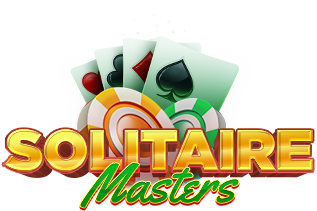A historic table game that dates back over 5000 years is that of backgammon. From boards to checker pieces, from dice to doubling cubes, all will feature in this age-old two-player pass time. Although there is an element of luck in backgammon owing to all the dice rolling, this nevertheless is a game of crafty tactic and strategy.
Amusing History
Archaeological discoveries suggest that modern-day backgammon originated in ancient Mesopotamia. This is very likely as the game of backgammon requires the use of dice, and the oldest dice in human history were also found in Mesopotamia. Most of the rules of backgammon probably came from the Royal Game of Ur, which was played in ancient Mesopotamia even before 2600 BC. The game of Senet, played in early Egypt around 3000 BC, is also likely to have contributed to the rules of backgammon. According to literary texts, backgammon was invented by a minister of King Khosrow I named Wuzurgmihr, who came up with backgammon for Dewisarm, an Indian king, to see whether or not Dewisarm could figure out how this game was to be played.
Rules of This Game
In backgammon, each player has 15 color-coded checker pieces that can be moved along the long spear shapes drawn on the board, which are known as triangles or points. In all, there are 24 triangles in the backgammon and the player who can remove all his/her checkers from the board first will be crowned the winner. Each round of backgammon can be its own game, or players can contest over several rounds using a scoring system to decide the winner that way. Participants will be seated at opposite ends of the board with one competitor moving his/her pieces from the top right quadrant of the board to the bottom right, while the other moves his/her pieces from the bottom right quadrant to the top right. The game starts with each player rolling one of their two dice, and the player who rolls the higher number will go first. The combined values of both player's dice dictate the number of points that the first-mover will be able to travel. Going forward, each player will roll their respective pair of dice on each turn as they move their checkers. Only the checker at the top most part of the spear can be moved, and it can be placed in a triangle that is empty, has that player's own checkers, or has only one opposing checker piece. If an opponent has two or more checkers taking up a triangle, then the other player cannot place his/her piece on that same spear regardless of the value of the dice. However, if only one of the opponent's pieces is occupying space, then the other player can eject that piece from the triangle and replace it with one of his/her pieces. When a player has a checker piece ejected from gameplay, that piece is removed and placed in the middle wooden part of the board. It is compulsory for the player who had his/her checker piece removed to try and reinsert that piece into gameplay when s/he rolls his/her dice before s/he is allowed to make any other moves. If the piece cannot be reintroduced because of the other player's pieces getting in the way, then the player's turn is over without him/her making any other moves. Once reinserted, the piece will have to be placed in the quadrant that is the furthest away from the finish line. If a participant manages to roll the same value on both dice, then s/he will take that turn as if he rolled the same value on four dice. This means, s/he will be able to move his/her checkers a total of four times. Also, if a player wishes to combine both dice values to move just a single checker, s/he will only be able to do this if the intermediate space is not occupied by two or more of the opponent's pieces. Even if the space the checker will eventually end up in is open, that move won't be allowed if the intermediate stop is not open. As mentioned earlier, the ultimate goal of the backgammon is for a player to clear his/her checkers off the board first. This process is also known as bearing off. However, it can only be done when all of a player's pieces have been moved to his/her respective final quadrant, also known as the home quadrant. Once in the home quadrant, the players will roll dice and move across spaces accordingly to have their pieces exit the board. During the bearing off process, if a higher number is rolled than it is required for the piece to exit the board, then the player can bear off the piece in the home quadrant that is furthest from the point of exit. If a competitor achieves victory before his/her opponent manages to bear off any piece, then that is called gammoning. And if a player wins before his/her opponent was able to bear off any piece while still having at least one checker left in the first quadrant or the middle wooden bar, then that situation is termed backgammoning.
Juicy Interesting Fun Facts
Here are some interesting aspects that'll keep you thinking about this board game even when you sleep! Did you know that backgammon was probably a game of elites at first because an entire backgammon set from 1500 BC was found inside the tomb of King Tutankhamen. Later, such a game travelled far & wide and soon it was being played in numerous countries. Backgammon went into full swing in the USA in the 1920s and it was only after an American introduced the doubling cube, which is a way for either player in the game to raise the stakes. This high enthusiasm for this game paved the way for the first-ever international backgammon tournament that took place in 1964, which was hosted by Prince Alexis Obolensky.
